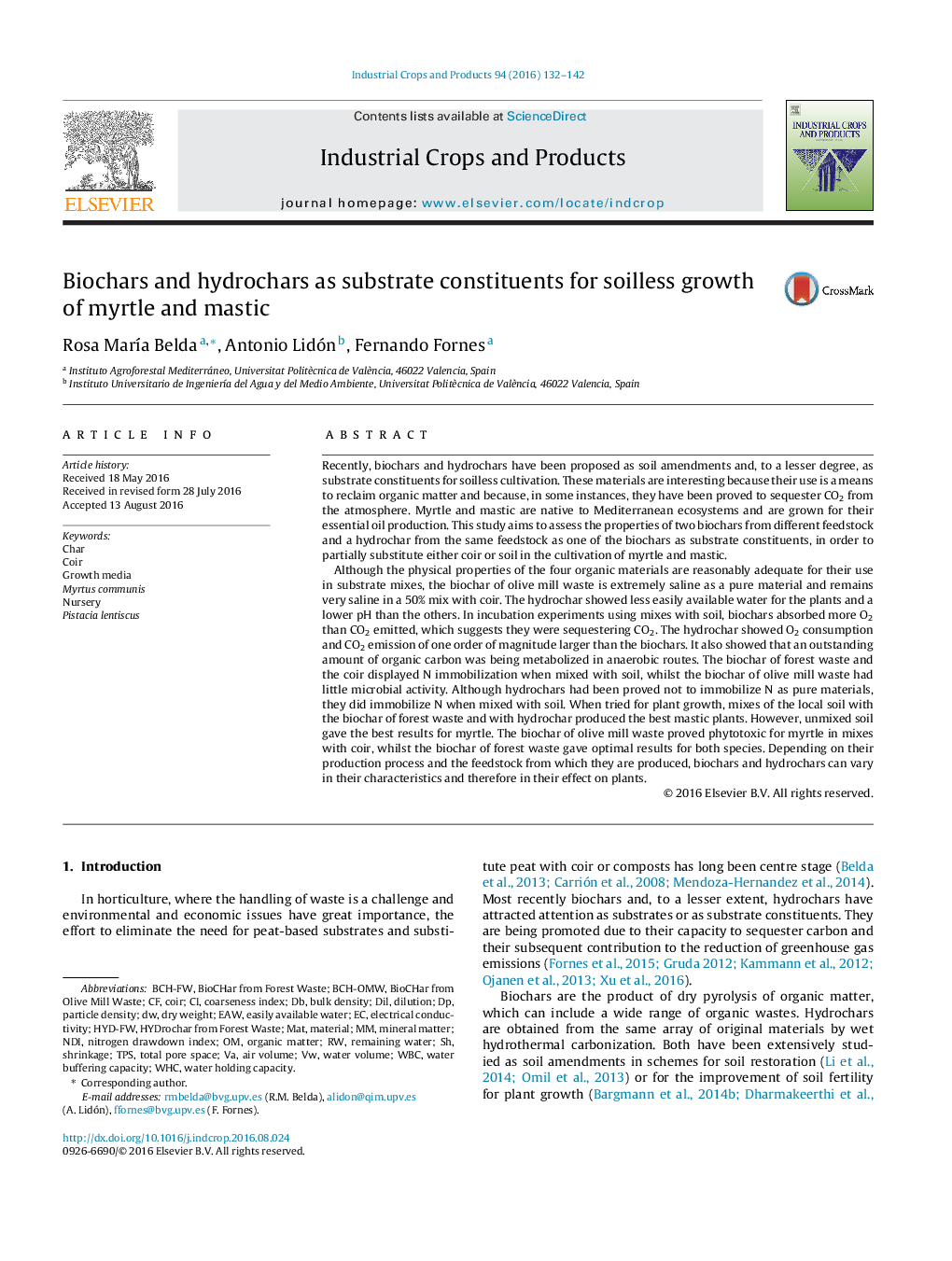| Article ID | Journal | Published Year | Pages | File Type |
|---|---|---|---|---|
| 6375365 | Industrial Crops and Products | 2016 | 11 Pages |
Abstract
Although the physical properties of the four organic materials are reasonably adequate for their use in substrate mixes, the biochar of olive mill waste is extremely saline as a pure material and remains very saline in a 50% mix with coir. The hydrochar showed less easily available water for the plants and a lower pH than the others. In incubation experiments using mixes with soil, biochars absorbed more O2 than CO2 emitted, which suggests they were sequestering CO2. The hydrochar showed O2 consumption and CO2 emission of one order of magnitude larger than the biochars. It also showed that an outstanding amount of organic carbon was being metabolized in anaerobic routes. The biochar of forest waste and the coir displayed N immobilization when mixed with soil, whilst the biochar of olive mill waste had little microbial activity. Although hydrochars had been proved not to immobilize N as pure materials, they did immobilize N when mixed with soil. When tried for plant growth, mixes of the local soil with the biochar of forest waste and with hydrochar produced the best mastic plants. However, unmixed soil gave the best results for myrtle. The biochar of olive mill waste proved phytotoxic for myrtle in mixes with coir, whilst the biochar of forest waste gave optimal results for both species. Depending on their production process and the feedstock from which they are produced, biochars and hydrochars can vary in their characteristics and therefore in their effect on plants.
Keywords
Related Topics
Life Sciences
Agricultural and Biological Sciences
Agronomy and Crop Science
Authors
Rosa MarÃa Belda, Antonio Lidón, Fernando Fornes,
